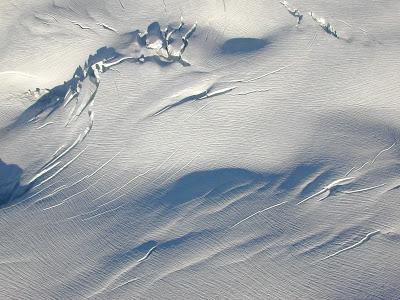
The NW Face of Forbidden Peak
Story and Photos by AAI Guide and Program Coordinator Coley Gentzel cgentzel@aai.cc The Northwest Face is the third route I have climbed on Forbidden Peak, and without question, it has been the best so far. Forbidden Peak sits along the crest of the Cascade Range in Washington State. The West Ridge is an ultra popular (50 Classic Climbs) route that can get crowded on the right weekend. The East Ridge is equally as good, but less popular due to the slightly more difficult rating. For years I had known about a route on the Northwest Face, and though I had gazed at Forbidden from dozens of peaks in the neighborhood, I had never actually stopped to have a look, scan the guidebook, or ask other climbers about this particular route. Being pretty far from the beaten path, I figured it was like most somewhat obscure Cascade Routes, low quality and hardly worth the effort.
In early August of this year, I found myself with one of those coveted free weekends and was faced with the enjoyable task of figuring out what to do and where to go. About that time, I happened across a few photos on the
internet from a recent trip to the NW Face. After a moment of inspection, I had to do a
doubletake to make sure I
wasn’t reading a trip report about the famed North Ridge of Mount Stuart or some golden granite mecca like the Sierra. The route was more of a knife-edge ridge than a face, the granite was clean and solid, and the position on the remote north side of Forbidden looked spectacular. Needless to say, I
didn’t have to look any farther for weekend plans.
My partner for this climb was Andy
Niskanen. Andy and I usually hook up for a climb or two a year here in the Cascades, and we never fail to wind up tired, a bit strung out, and super satisfied after the outings. Andy likes to give the credit for our perfect alpine track record to his favorite shirt, nicknamed the
Hasselhof, which he wears with pride on every climb we do. I on the other hand, am not sure why things always tend to go smoothly for us in the mountains. Maybe two wrongs do make a right?
Once again, Andy was the perfect partner for the trip and things went about as smoothly as they could have. The approach to the NW Face requires that you nearly climb the mountain before descending onto the north side of the peak. From a col below the West Ridge, only a few hundred feet from the summit, you have to
downclimb, make five rappels into the unknown, and drop onto a glacier before descending even farther to gain the start of the climbing route. The route itself is long, dramatic, and absolutely gorgeous. As with most mountain routes, you find a few wiggly holds and loose blocks from time to time, but all in all I
couldn’t believe the high quality of the route. Aside from one steep and
pumpy 5.8 that felt quite difficult in boots/approach shoes, the climbing was mostly in the low to mid-fifth class range.
This climb was a good reminder of how many hidden gems can easily be overlooked in just about any range. It is easy to focus on the routes that are well known, well documented, and easy to get to. When you start to run out of ideas for new and exciting climbs, poke around a little, dig a little deeper, and you just might discover the best route on your own Forbidden!

Approaching camp in Boston Basin below Forbidden Peak

An early bed time in preparation for an early rise.

Clouds fill the Cascade River valley as we cast off.
Mt. Johannesburg on the left.

Looking down on the lower third of the route from near the
West Ridge Col

On a gentle section of the lower ridge

Approaching the halfway point of the climb

Looking down on the lower ridge just above the crux pitch,
with the extremely isolated Moraine Lake below.

Nearing the summit ridge

On the summit of Forbidden Peak. In the distance,
Eldorado Peak (center) and the Inspiration Glacier.
To talk to Coley about setting up an ascent or instructional program, please call him at 800-424-2249 or email
cgentzel@aai.cc.

.jpg)













































